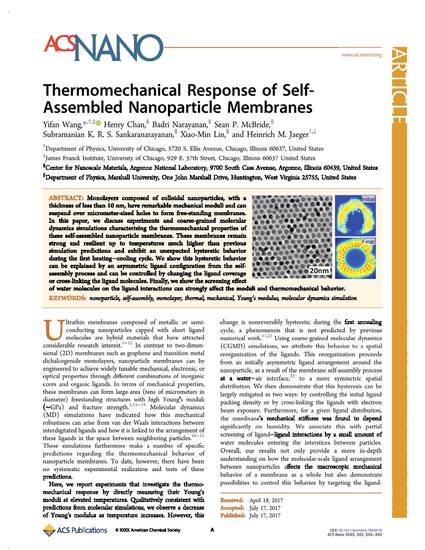
Article
Thermomechanical Response of Self-Assembled Nanoparticle Membranes
ACS Nano
(2017)
Abstract
Monolayers composed of colloidal nanoparticles, with a thickness of less than 10 nm, have remarkable mechanical moduli and can suspend over micrometer-sized holes to form free-standing membranes. In this paper, we discuss experiments and coarse-grained molecular dynamics simulations characterizing the thermomechanical properties of these self-assembled nanoparticle membranes. These membranes remain strong and resilient up to temperatures much higher than previous simulation predictions and exhibit an unexpected hysteretic behavior during the first heating−cooling cycle. We show this hysteretic behavior can be explained by an asymmetric ligand configuration from the self-assembly process and can be controlled by changing the ligand coverage or cross-linking the ligand molecules. Finally, we show the screening effect of water molecules on the ligand interactions can largely change the moduli and thermomechanical behavior.
Keywords
- Nanoparticles,
- membranes,
- nanoparticle membranes,
- Young's modulus,
- moduli,
- thermomechanical,
- coarse grained,
- molecular dyanamics
Disciplines
Publication Date
Summer July 17, 2017
DOI
10.1021/acsnano.7b02676
Citation Information
Sean P. McBride. "Thermomechanical Response of Self-Assembled Nanoparticle Membranes" ACS Nano (2017) Available at: http://works.bepress.com/sean-mcbride/20/
